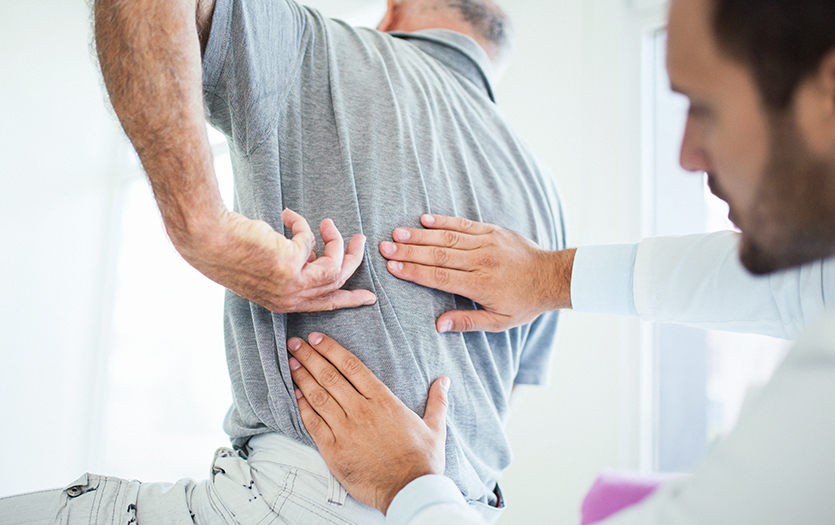
Alan McGee Jr., MD, spine surgeon, Orthopedics Northeast, answers common questions about cervical spinal stenosis, including popular risk factors, presentations and treatment options for those experiencing discomfort or noticeable impairments.
What is cervical spinal stenosis?
Cervical spinal stenosis is a term used to refer to a narrowing of the spinal canal, or the nerve tunnels or small nerves found in the spine. These patients are experiencing compression in the spinal cord and/or neck, which often leads to uncomfortable or concerning symptoms.
What are the risk factors or causes of cervical spinal stenosis?
The most common contributing factors are degenerative changes that often come with aging, such as arthritis or degenerative disease in the neck. These conditions, over time, can cause changes to the structure of the spinal canal.
There are also patients who are born with a narrowed spinal column, meaning they have less space in the spinal cord. This is known as congenital stenosis.
Other potential causes include trauma to, tumors in or bone disorders of the spine.
What are the symptoms of cervical spinal stenosis?
While the specific symptoms a patient experiences depend on the location of the narrowing, one of the most common presentations is numbness and tingling in the upper extremities, including the hands. Patients also experience clumsiness (issues with gait or balance) and changes in their hand dexterity. They often report pain and stiffness, in some cases.
How is cervical spinal stenosis diagnosed?
in order to diagnose spinal stenosis, an orthopedic provider will perform a physical exam and talk to the patient about their symptoms and medical information. The physician will check for abnormalities with the patient’s reflexes, weakness in their upper extremities, their ability to walk toe to heel and any decrease in sensation.
Often, an MRI and x-ray are ordered to help evaluate the degree of nerve compression in the spinal cord. A CT scan can also be helpful in evaluating a patient’s condition.
How is cervical spinal stenosis treated?
If a patient shows evidence of cervical stenosis on an MRI, but isn’t experiencing significant symptoms and/or isn’t a good candidate for surgery, the typical recommendation for treatment is physical management through physical therapy, though this will not address the spinal compression.
in most cases the standard of care is to surgically decompress the area through internal decompression infusion techniques, laminectomy (removes the back part of the affected vertebrae) or laminoplasty (hardware is placed to create a more space for the spinal cord while preserving range of motion). Anterior cervical procedures are minimally invasive and have great results for low infection, reduced pain and increased return to function. More invasive techniques bring a slightly higher risk of infection, but also allow for long construct fusions that ensure adequate decompression in the area.
When should someone seek a consult about their spinal/neck pain?
A lot of people chalk up changes in their balance or hands to old age, but that isn’t always the case. If you start feeling tingling or numbness in your upper extremities you should reach out to your primary care provider and talk to them about seeing an orthopedic specialist who can evaluate your concerns and develop a treatment plan.
Can cervical spinal stenosis be prevented?
Unfortunately, patients can't avoid the risk factors that often lead to cervical spinal stenosis, like genetics, activity and age. The best thing you can do is listen to your body and seek a medical evaluation if you notice changes.
Does having cervical spinal stenosis put someone at risk of other complications?
About 20% of the patients I see with cervical spinal stenosis also have lumbar stenosis, which is a narrowing of the spinal canal in the lower part of the back. They can occur in tandem because of stress in the same area. These conditions can be addressed surgically at the same time, but cervical spinal stenosis is the priority, since it affects all downstream functions with the nerves from the neck, down.


